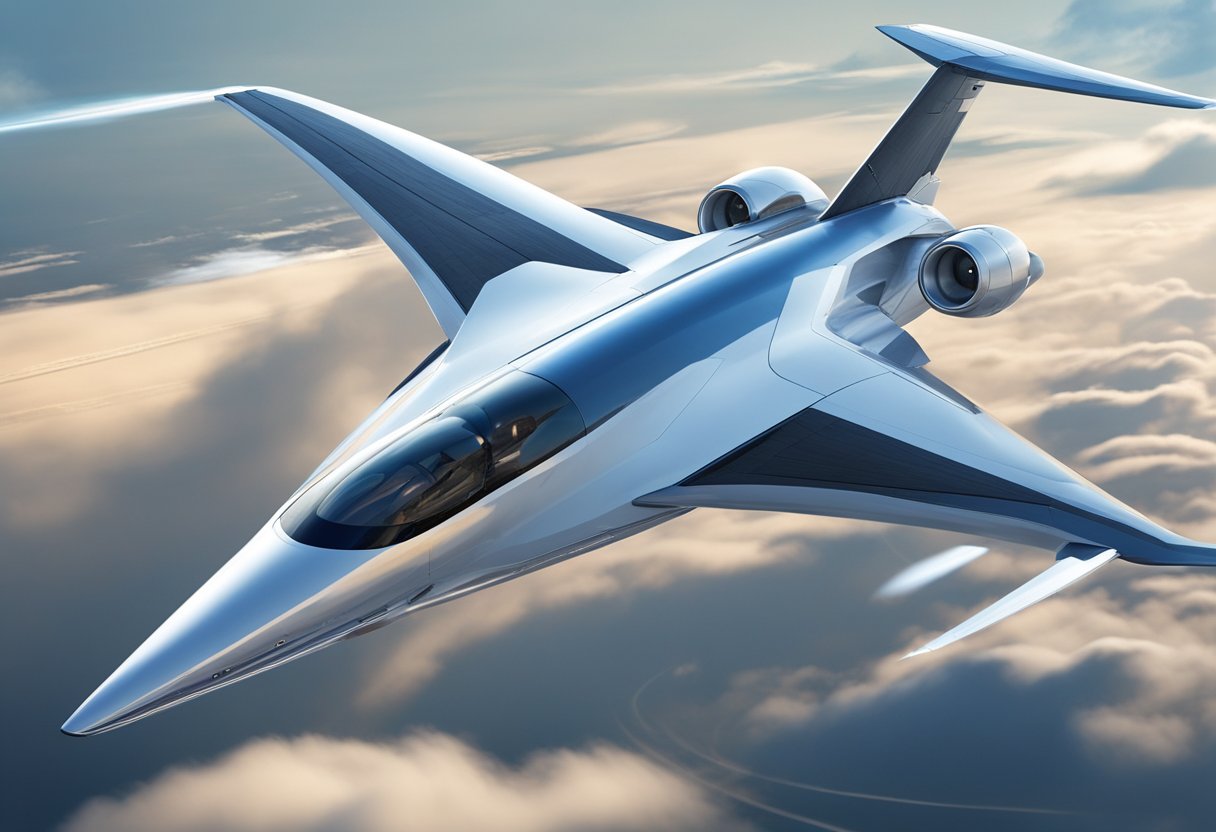
The aviation industry has faced countless challenges in recent years, particularly in light of the COVID-19 pandemic. As the world continues to adapt to new realities, the future of the aviation industry is shaped not only by advances in aircraft technology and intelligent operational processes but also by changes in market dynamics and economic factors.
Sustainability in aviation has become a vital aspect for industry stakeholders as environmental concerns drive the emergence of greener practices in aircraft manufacturing, operation, and airport facilities. In tandem, the landscape of airports continues to evolve, spurred on by innovative business models and emerging technologies, such as AI, that impact various aspects of aviation.
As we look ahead to 2024 and beyond, the aviation industry must navigate a complex web of regulatory and policy changes while addressing societal implications related to advanced aviation. The industry’s ability to adapt and thrive amidst these shifting circumstances will ultimately shape its future.
Key Takeaways
- Advances in technology and the post-Covid-19 landscape are shaping the future of the aviation industry.
- Sustainability and operational efficiencies are becoming increasingly important for industry stakeholders.
- Emerging technologies, innovative business models, and regulatory changes will influence the industry’s evolution.
Evolution of Aviation Post-COVID-19
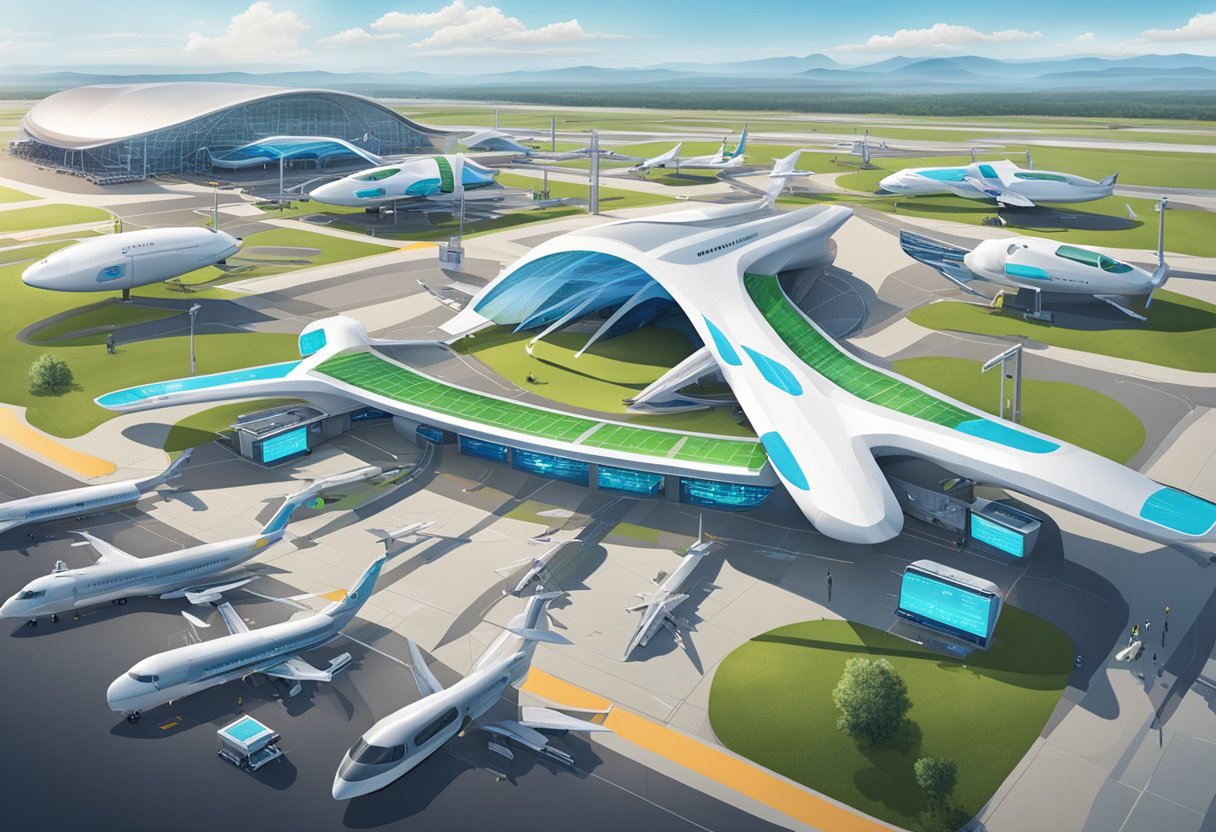
Impact of the Pandemic on Air Travel
The COVID-19 pandemic has significantly impacted the aviation industry. In 2020, industry revenues totaled around 40 percent of the previous year’s, a devastating setback for the sector. The sudden drop in demand for air travel, fueled by travel restrictions and consumer uncertainty, created a challenging environment for airlines and related businesses worldwide. Multiple stakeholders within the aviation value chain, except freight forwarders and cargo airlines, suffered huge losses.
Recovery and Adaptation Strategies
As borders started reopening and vaccinations became more widespread, the aviation industry began to adapt by implementing health and safety protocols, enhancing cleaning procedures, and reevaluating operational approaches. For instance, airlines explored options like offering pre-flight COVID-19 testing and adopting contactless services to minimize person-to-person interactions.
Another strategy focused on flexible booking policies, catering to travelers’ demand for more lenient cancellation and rescheduling terms. These efforts aimed to rebuild consumer confidence and re-establish the demand for air travel.
Changing Trends in Business and Recreational Travel
The pandemic significantly impacted business travel, as companies worldwide adopted remote work strategies and turned to virtual meetings and conferences. This shift may continue to influence corporate travel decisions, with some businesses reducing their dependency on in-person meetings and reassessing the necessity of traditional business trips.
Conversely, recreational travel may experience a surge in demand as travelers seek to make up for lost time and take advantage of newfound opportunities. The post-pandemic environment has seen a greater focus on regional airports, with over 1,400 new air routes scheduled to operate in 2021.
The aviation industry has faced significant challenges due to the COVID-19 pandemic but demonstrates resilience and adaptability. Recovery strategies, such as flexible booking policies and health protocols, have been implemented to regain consumer confidence. In the long run, changing business and recreational travel trends will shape aviation’s future and its continued evolution in a post-COVID world.
Advances in Aircraft Technology

New Propulsion Technologies
In recent years, the aviation industry has been exploring new propulsion technologies to improve efficiency and reduce emissions. One key innovation is the development of electric and hybrid aircraft, which offer the potential to reduce fuel consumption and carbon emissions significantly. These aircraft rely on electric motors for propulsion, with batteries supplying the necessary energy. On the other hand, hybrid aircraft combine traditional combustion engines with electric systems for improved fuel efficiency.
Another promising propulsion technology is hydrogen fuel cells, which generate electricity through a chemical reaction between hydrogen and oxygen, producing only water as a byproduct. This clean technology has the potential to revolutionize aviation by providing a sustainable and emissions-free power source.
Fuel-Efficient Aircraft Development
The demand for fuel-efficient aircraft has led manufacturers to continuously seek innovative ways to reduce fuel consumption. One key development is the use of sustainable aviation fuels (SAF) derived from biofuels or other renewable sources. These fuels help reduce aircraft’s carbon footprint by producing fewer emissions, thereby contributing to the industry’s overall sustainability.
In addition to SAF, manufacturers are utilizing lightweight materials and advanced aerodynamics to achieve greater fuel efficiency. For example, composite materials in aircraft construction result in lighter airframes, reducing fuel consumption.
The Role of Automation and AI
Automation and artificial intelligence (AI) are increasingly important in the aviation industry. From autonomous aircraft to AI-powered airport operations, these technologies are transforming aviation by enhancing passenger experiences and streamlining operations. One example is using biometric boarding systems that utilize facial recognition technology to expedite passenger boarding, thereby reducing delays and increasing efficiency.
AI is also being implemented in aircraft maintenance and safety inspections. For instance, robotic systems are being developed for inspecting hard-to-reach areas, while AI algorithms can analyze large amounts of data to predict and prevent potential failures.
In summary, the future of aviation is expected to be shaped by advances in propulsion technologies, fuel-efficient aircraft development, and the increasing role of automation and artificial intelligence. These innovations are crucial in ensuring the sustainability and efficiency of the industry in the years to come.
Sustainability in Aviation
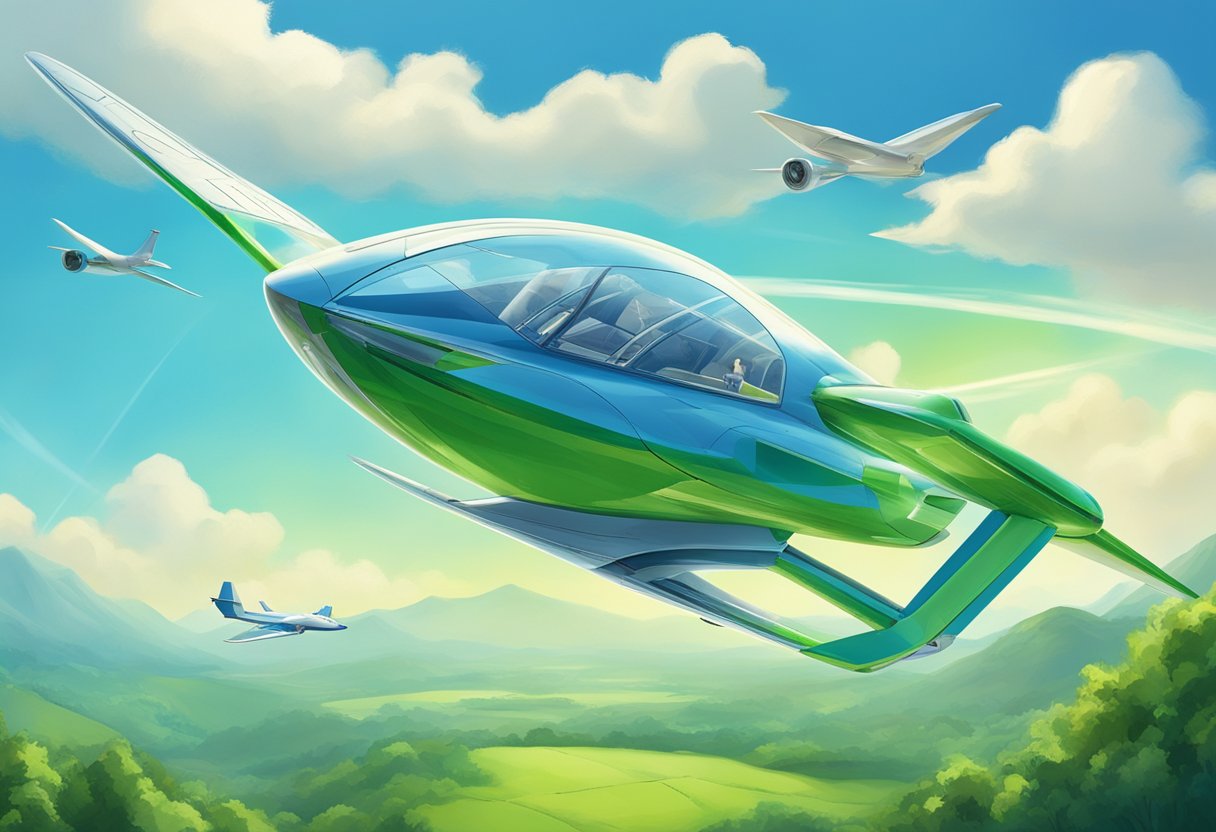
Sustainable Aviation Fuel (SAF)
As the aviation industry looks towards a more sustainable future, one of the key advancements has been the development of Sustainable Aviation Fuel (SAF), which has the potential to reduce greenhouse gas emissions significantly. Produced from renewable and waste feedstock, SAF can decrease emissions by up to 100 percent compared to conventional jet fuel. It plays a fundamental role in aviation’s short to medium-term decarbonization efforts, with many airlines and Original Equipment Manufacturers (OEMs) actively prioritizing SAF adoption.
Achieving universal SAF usage involves collaboration between industry stakeholders, governments, and organizations such as the International Civil Aviation Organization (ICAO). The United Nations Sustainable Development Goals (SDGs) also serve as a guiding framework for the industry to align its sustainability initiatives.
Emissions Regulations and Climate Change
Climate change poses a significant challenge for the aviation industry, contributing to 2% of global greenhouse gas emissions. In response, the industry has committed to achieving net-zero emissions by 2050. This ambitious target is supported by governmental and regulatory bodies such as the ICAO, whose climate action plans aim to drive sector-wide emissions reduction.
To meet these ambitious goals, numerous initiatives and technologies are being explored, including:
- Aircraft efficiency: Enhancing aircraft design, materials, and technologies to improve fuel efficiency.
- Operational improvements: Implementing measures to minimize fuel consumption and optimize flight routing.
- Market-based mechanisms: Developing policies to incentivize emissions reduction in aviation.
Green Airport Initiatives
Alongside the focus on SAF and emissions, the transition to a more sustainable aviation ecosystem involves implementing green airport initiatives. Airports worldwide are actively adopting strategies to decrease their environmental impact and contribute to achieving the industry’s net-zero target.
Some prominent green airport measures include:
- Energy efficiency: Utilizing renewable energy sources, installing LED lighting, and implementing energy management systems.
- Waste management: Enhancing recycling and composting facilities, implementing waste reduction strategies, and promoting circular economy practices.
- Sustainable ground transportation: Encouraging electric and low-emission vehicles for ground transportation and airport operations.
By embracing these strategies, airports play a crucial role in promoting sustainability within the aviation industry and helping drive progress towards addressing climate change challenges and meeting international commitments.
Airline Operational Efficiencies
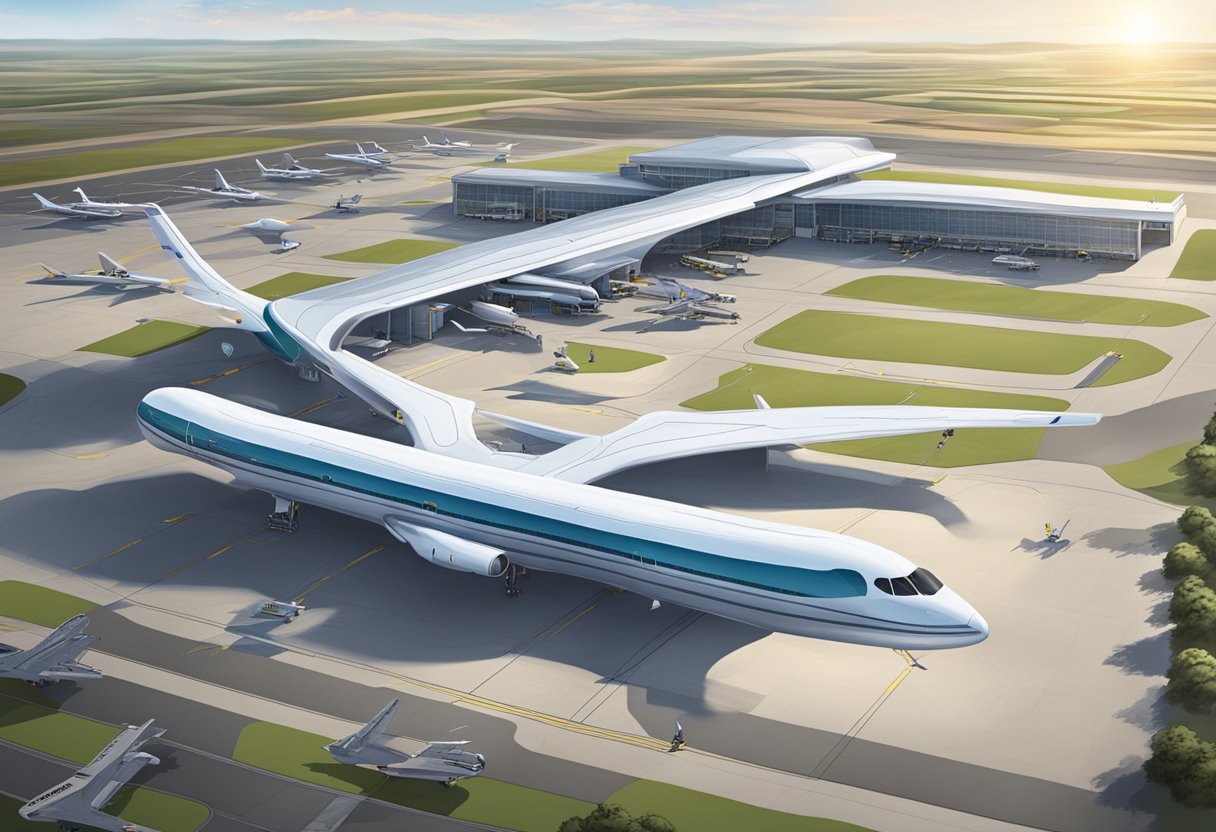
Optimizing Air Traffic Management
Efficient air traffic management is crucial in reducing delays and improving fuel consumption. By investing in modern technologies, airlines can optimize their flight paths, reduce congestion, and minimize the impact of unexpected events. For instance, implementing advanced algorithms and real-time data can help dynamically adjust flight routes to ensure maximum efficiency.
Benefits include:
- Reduced fuel consumption through optimized flight paths
- Minimized delays and cancellations
- Improved airspace capacity utilization
Supply Chain and OEM Interfaces
Collaboration between airlines, Original Equipment Manufacturers (OEMs), and suppliers can significantly impact the aviation industry’s operational efficiency. Streamlining processes through data sharing and establishing clear communication channels can result in more accurate demand forecasts and inventory management. This means lower operating costs, shorter lead times, and increased flexibility in dealing with market fluctuations.
Key approaches:
- Joint planning and forecasting
- Sharing real-time data on inventory levels
- Utilizing automation and digitization to improve accuracy
Profitability and Cost Management
Profitability in the aviation industry relies heavily on controlling operating costs and managing unpredictable factors such as fuel prices and the demand for air travel. Airlines can employ strategic cost-cutting measures to enhance operational efficiency without compromising service quality or safety standards. Some potential strategies include:
- Right-sizing aircraft fleets: Aligning fleet composition with passenger demand, considering the optimal mix of aircraft sizes and types, can lead to cost savings.
- Process optimization: Streamlining internal and external processes, such as crew scheduling and maintenance tasks, can result in reduced downtime and lower labor costs.
- Fuel efficiency: Investing in fuel-efficient technologies and adopting sustainable aviation practices can mitigate the impact of fluctuating fuel prices and reduce the airline’s environmental footprint.
In conclusion, airlines must optimize air traffic management, enhance supply chain and OEM interfaces, and implement effective cost management strategies to increase operational efficiencies. By doing so, they are better prepared to face future challenges and capitalize on opportunities in the ever-evolving aviation industry.
The Future of Airports

Enhancing Passenger Experience
The aviation industry is constantly striving to improve travelers’ airport experiences. One focus is making airports more user-friendly with streamlined processes and intuitive navigation. Digital touchpoints are being implemented to guide passengers through the different stages of their airport journey, such as check-in, security, and boarding.
Another aspect of enhancing the passenger experience is integrating airport amenities. This includes a wider variety of dining and shopping options and dedicated rest and leisure zones to accommodate different traveler preferences.
Smart Airports and Biometrics
Airport operations are evolving toward a more tech-savvy approach known as Airport 4.0. Smart airports incorporate Internet of Things (IoT) networks, 5G connectivity, data analytics, and artificial intelligence to improve efficiency and security.
One significant advancement in this direction is the use of biometric technology. Facial recognition, fingerprint scans, and iris recognition are being adopted to expedite processes and increase security measures. These biometric systems streamline boarding procedures and reduce the need for physical documentation, enhancing the airport experience while maintaining safety.
Hygiene and Health Measures
With increased importance placed on health and well-being due to the COVID-19 pandemic, airports are implementing stricter hygiene and health measures. This includes:
- The use of high-efficiency air filtration systems to maintain clean air circulation within the airport.
- The incorporation of contactless technology for transactions, check-ins, and luggage handling.
- Enhanced cleaning protocols with the use of advanced disinfection methods.
- The monitoring of passengers for signs of illness through temperature checks and thermal imaging cameras.
These measures are essential for restoring confidence in air travel and ensuring the well-being of all passengers and airport staff.
Market Dynamics and Economic Factors
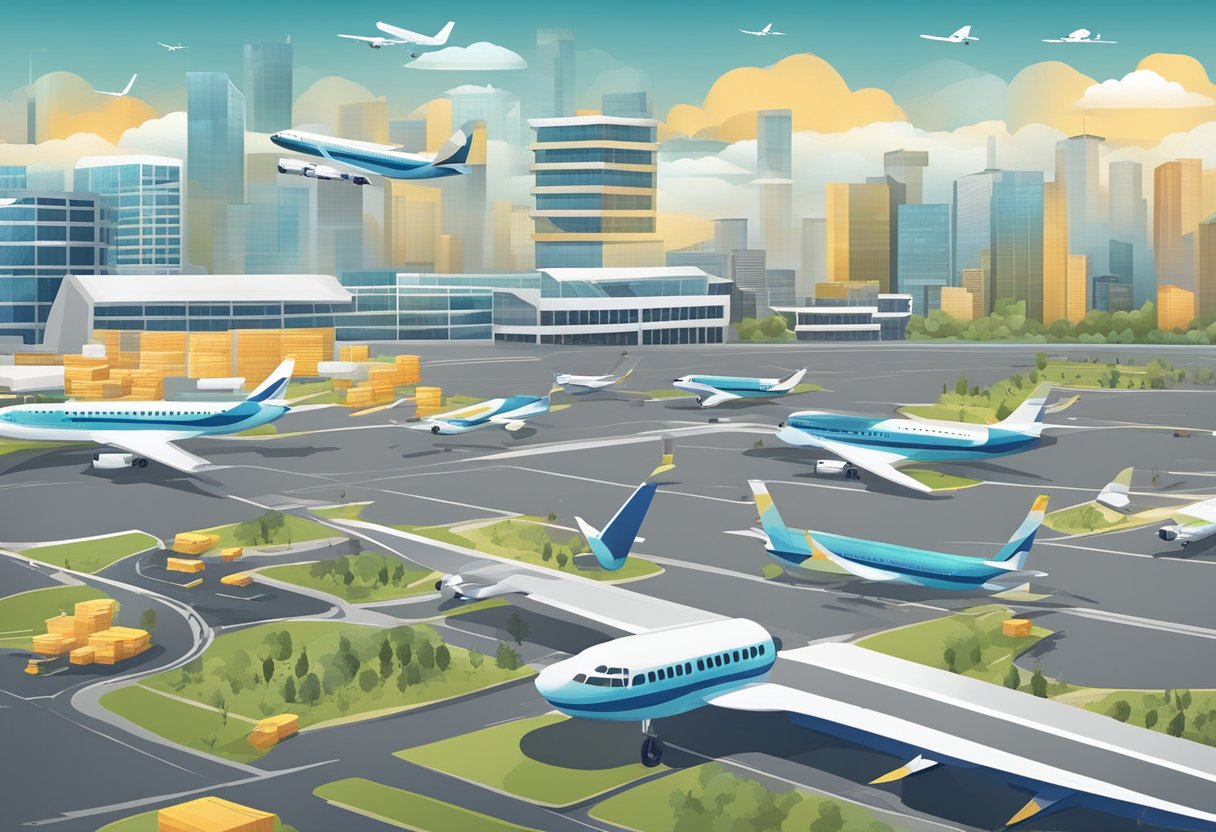
Influence of Global Economic Shifts
The future of the aviation industry is closely linked to the broader global economic landscape. Factors such as demand, economic growth, and trade play a significant role in shaping the industry’s trajectory. For instance, increasing global economic growth often leads to higher demand for air travel as businesses expand internationally and individuals have more disposable income to spend on leisure trips.
A key aspect of this relationship is the impact of high fuel prices on the aviation industry. As fuel prices rise, airlines face increased operational costs, which can result in lower profitability. However, some airlines use fuel hedging strategies to mitigate this risk and keep prices competitive for passengers.
Trade, Inflation, and Airline Economics
Trade and inflation also significantly influence the aviation industry. With globalization, there is an increased need for air cargo services, as companies rely on efficiently transporting goods across borders. A strong global trade environment directly impacts the demand for air cargo, supporting the growth of the aviation industry.
Conversely, inflation can have varying consequences for airline operations depending on the specific market conditions. An increase in inflation may lead to higher wage and supply costs for airlines, but it can also result in higher ticket prices if customer demand remains robust. Managing the balance between inflation and airline economics is crucial for the industry’s long-term success.
Future Investment and Development Opportunities
Several factors present investment and development opportunities for the aviation industry. For example, emerging markets, such as India and China, are experiencing rapid economic growth and increasing demand for air travel. This presents an opportunity for investment in infrastructure, such as airports and air traffic control systems, to accommodate the growing number of passengers.
Technological advancements in aircraft manufacturing also offer opportunities for the industry. With the increasing focus on sustainability and the need to reduce carbon emissions, investments in fuel-efficient and electric aircraft are seen as essential to the future of aviation.
Moreover, the expected growth of the aviation market creates potential for new and existing operators to expand their route networks, fleets, and services, catering to the diverse needs of passengers worldwide.
Understanding market dynamics and economic factors is essential in the aviation industry. Economic shifts, trade, inflation, and development opportunities all impact the industry’s trajectory, and considering these factors in decision-making processes ensures the sector’s long-term viability.
Regulatory and Policy Changes
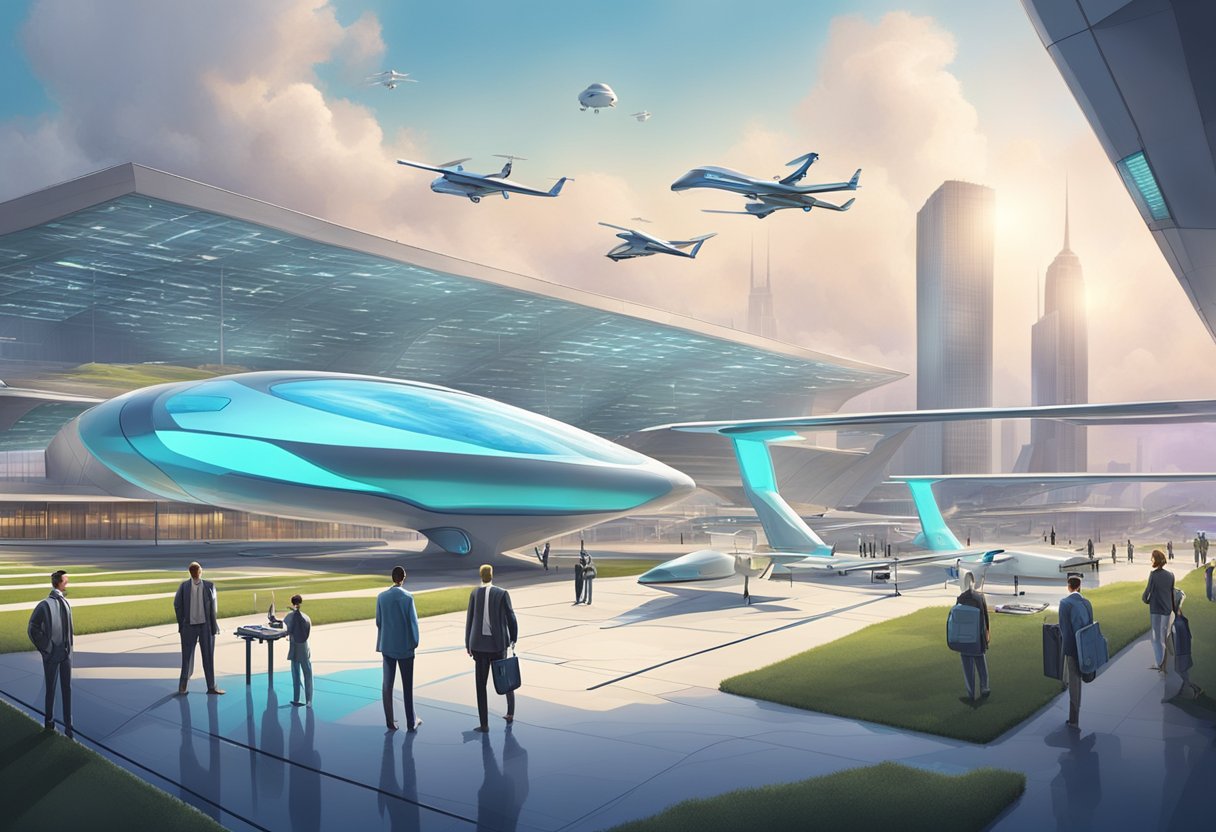
Government and International Regulations
In the future of aviation, governments and international organizations play a critical role in enacting regulations that ensure safety, efficiency, and environmental sustainability. Organizations like the International Civil Aviation Organization (ICAO) work with governments worldwide to set global standards for the aviation sector. As air travel continues to grow, one key focus of governments and regulators will be addressing the industry’s environmental impact, as evidenced by the United States Aviation Climate Action Plan, which aims to achieve net-zero emissions by 2050.
Private Sector and Public Collaboration
Collaboration between the private sector and public institutions will be crucial for successfully implementing new policies and regulations that shape the aviation industry’s future. Organizations such as IATA actively engage with governments and other stakeholders to exchange expertise and knowledge and support the development of sustainable and effective policies. Furthermore, partnerships with private companies allow governments to tap into innovative technologies and strategies that can help address industry challenges, such as workforce shortages and climate change.
Adapting to New Aviation Standards
The aggressive pace of growth and technological advances make it essential for the aviation industry to adapt to new standards and practices. Governments, regulatory bodies, and the private sector must work together to establish clear guidelines allowing the industry to adapt to changing circumstances swiftly. For example, the commercial aviation industry faces soaring demand due to the rapid rebound of air travel, which strains production capacity and the global workforce. By continually monitoring industry trends and engaging in effective dialogue, these stakeholders can develop flexible and proactive strategies for addressing the challenges that lie ahead.
Overall, aviation’s future will hinge upon effective regulatory changes and a coordinated effort among governments, international organizations, and the private sector. By working together, these entities can usher in an era of safer, more efficient, and environmentally sustainable air travel.
Innovative Business Models
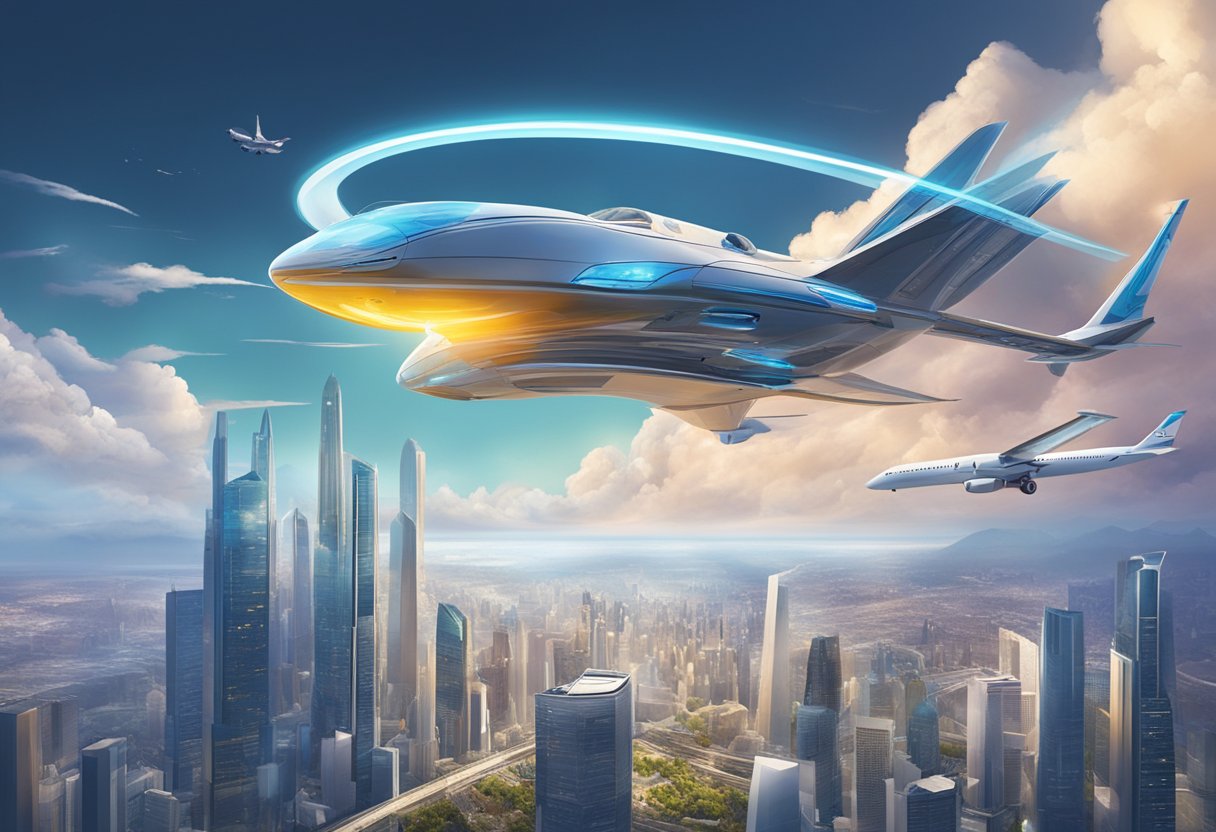
Shifts in Airline and Airport Business Structures
In the aviation industry, shifts in airline and airport business structures are becoming increasingly common, largely due to rapid technological advancements and new market opportunities. One notable trend is the move towards service-based business models, where airlines and airports focus on improving the overall customer experience. This includes offering enhanced amenities, personalized services, and seamless digital connectivity to passengers.
Traditional vs. New Business Structures:
TraditionalNew
Focused on transportation Focused on customer experience
Rigid service offerings Flexible and personalized services
Main revenue from ticket sales Diversified revenue streams
Diversification and New Revenue Streams
The aviation industry actively seeks ways to diversify its revenue streams and improve overall profitability. A major trend in this area is green travel, where airlines are capitalizing on the growing demand for sustainable and eco-friendly travel options. This includes the utilization of sustainable aviation fuels (SAFs) and integrating energy-efficient technologies in aircraft design. Another strategy is the development of ancillary services, such as in-flight entertainment, priority boarding, and baggage services, which help airlines generate additional income and offer customers a more personalized experience.
Examples of Diversification:
- Sustainable aviation fuels (SAFs)
- In-flight entertainment systems
- Ancillary services (e.g., priority boarding, baggage)
Collaborations and Partnerships
Companies within the aviation industry are finding value in forming collaborations and partnerships, which can help them achieve sustainable competitive advantage and improve operational efficiency. For example, airlines often partner with airport operators to develop integrated systems that streamline processes such as check-ins, security screenings, and baggage handling. In addition, airlines are increasingly forming alliances with other carriers to optimize route networks and resource utilization, benefiting businesses and passengers.
Benefits of Collaborations and Partnerships:
- Improved operational efficiency
- Optimized route networks
- Streamlined processes and resource utilization
- Shared risks and rewards
- Access to new markets and customers
